What is an Artificial Intelligence Robot and How Does It Work?
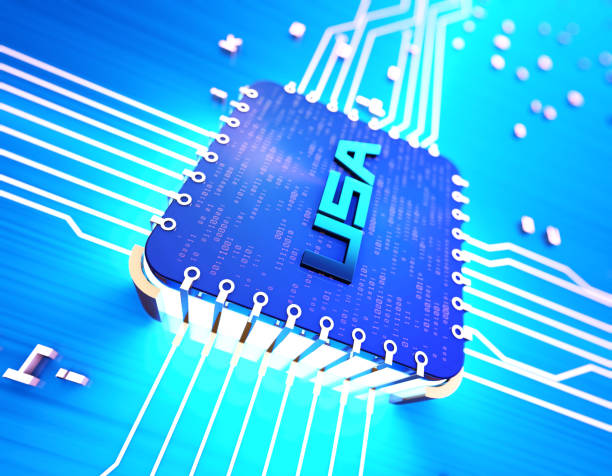
#An artificial intelligence robot is a computer program or machine designed to mimic human cognitive abilities, such as learning, problem-solving, and decision-making.
These robots use complex algorithms and machine learning models to process data and perform various tasks.
Artificial intelligence robots can be used in various fields, including customer service, manufacturing, healthcare, and finance.
The operation of an artificial intelligence robot generally involves receiving data, processing it using machine learning algorithms, and producing output or performing a specific action.
This process can include pattern recognition, prediction, decision-making, and learning from experiences.
For example, an artificial intelligence robot in customer service may analyze customer messages to answer their questions or solve their problems.
An artificial intelligence robot in manufacturing can optimize the production process and increase efficiency by analyzing data related to the production process.
Therefore, artificial intelligence in robots enables the performance of complex and diverse tasks.
Does your current website convert visitors into customers or scare them away? Solve this problem forever with a professional corporate website design by Rasaweb!
✅ Create a powerful brand and credibility
✅ Attract target customers and increase sales
⚡ Get a free consultation now!
Types of Artificial Intelligence Robots Based on Application
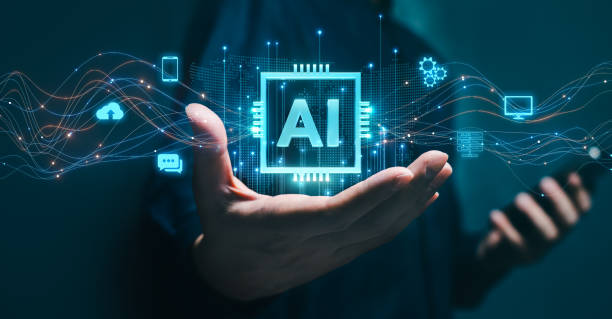
Artificial intelligence robots are divided into different types based on application.
Some of these types include:
- Chatbots: These robots are designed to interact with users through text or voice and can answer questions, provide information, and perform simple tasks.
- Image processing robots: These robots are used to detect and analyze images and can be used in fields such as face recognition, object recognition, and medical image analysis.
- Data analysis robots: These robots are used to analyze large data and extract patterns and useful information from them and can be used in fields such as marketing, finance, and healthcare.
- Robotic Process Automation (RPA): These robots are used to automate repetitive and manual processes and can be used in fields such as accounting, human resources, and customer service.
Each of these types of artificial intelligence robots has its own characteristics and capabilities, and depending on different needs, they can be used in different fields.
For example, a chatbot can be used on a company’s website to answer customer questions, while a data analysis robot can be used to analyze sales data and identify customer purchasing patterns.
Advantages of Using Artificial Intelligence Robots in Businesses
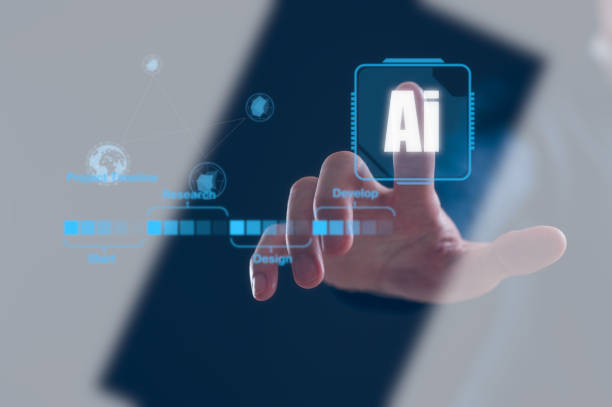
Using artificial intelligence robots in businesses can have many advantages.
Some of these advantages include:
- Increased productivity: Artificial intelligence robots can automate repetitive and manual tasks, which increases productivity and reduces costs.
- Improved customer service: Artificial intelligence robots can answer customer questions and solve their problems, which improves customer service and increases customer satisfaction.
- Better decision-making: Artificial intelligence robots can identify patterns and useful information by analyzing large data, which can help in making better and more accurate decisions.
- Reduced errors: Artificial intelligence robots can perform tasks more accurately than humans, which reduces errors and improves quality.
- 24/7 availability: Artificial intelligence robots can be available 24 hours a day, 7 days a week, which improves access and responsiveness to customers.
These advantages can help businesses improve their performance and increase their competitiveness.
For example, a company can use an artificial intelligence robot to automate the process of responding to customer emails, which reduces response time and improves customer satisfaction.
Also, artificial intelligence robots help in making better and more accurate decisions in the organization.
Challenges of Implementing Artificial Intelligence Robots

Implementing artificial intelligence robots can come with various challenges.
Some of these challenges include:
- High cost: Developing and implementing artificial intelligence robots can be costly, especially if advanced technologies and experienced professionals are required.
- Need for expertise: Implementing and managing artificial intelligence robots requires expertise in various fields such as machine learning, natural language processing, and software engineering.
- Sufficient data: Artificial intelligence robots need sufficient and high-quality data to learn and improve their performance.
Collecting and preparing data can be time-consuming and costly. - Ethical issues: The use of artificial intelligence robots can raise various ethical issues, such as privacy, discrimination, and accountability.
- Resistance to change: Some people may resist the use of artificial intelligence robots, especially if they are worried about losing their jobs.
To overcome these challenges, businesses must have careful planning and seek help from experienced professionals.
They should also pay attention to ethical issues and provide solutions to reduce resistance to change.
A correct understanding of these challenges and efforts to address them are the key to success in using artificial intelligence robots.
Are you worried that your old company website is scaring away new customers? Rasaweb solves this problem with a modern and efficient corporate website design.
✅ Increases your brand credibility.
✅ Helps attract targeted customers.
⚡ Contact Rasaweb for a free consultation!
The Future of Artificial Intelligence Robots and Their Impact on Our Lives
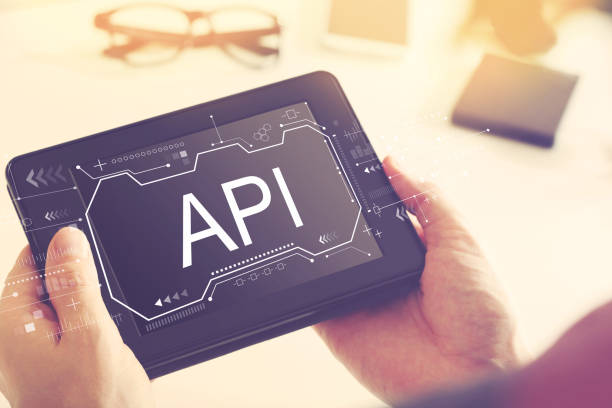
The future of artificial intelligence robots is very bright, and it is expected that this technology will have profound effects on our lives in the coming years.
Some predictions about the future of artificial intelligence robots include:
- Expanding applications: Artificial intelligence robots will find wider applications in various fields such as healthcare, education, transportation, and manufacturing.
- Developing capabilities: Artificial intelligence robots will have more advanced capabilities such as deep learning, natural language processing, and machine vision.
- Increased interaction: Artificial intelligence robots will be able to interact with humans more naturally and effectively.
- More automation: Artificial intelligence robots will be able to perform more complex tasks automatically, which will increase productivity and reduce costs.
- Changing the structure of jobs: The use of artificial intelligence robots can lead to changes in the structure of jobs and create new job opportunities.
However, the ethical and social issues related to the use of artificial intelligence robots should also be considered, and solutions for managing these issues should be provided.
The future of artificial intelligence is tied to robots, and any progress in this area will affect human life.
How to Choose the Right Artificial Intelligence Robot for Your Needs
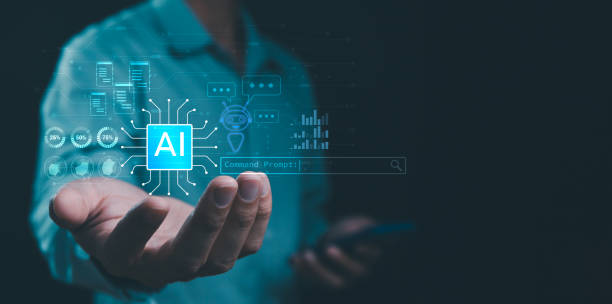
Choosing the right artificial intelligence robot for your needs requires careful review and evaluation of different options.
To choose the right artificial intelligence robot, you should pay attention to the following factors:
- Define your needs: Before anything else, you must define your needs precisely.
What tasks do you want the artificial intelligence robot to perform? What problems do you want it to solve? - Review different options: After defining your needs, you should review the different options available in the market.
What types of artificial intelligence robots are there? What are their capabilities? What are their prices? - Evaluate the capabilities of the robot: After reviewing the different options, you should carefully evaluate the capabilities of each robot.
Can the robot perform the tasks you want? Do its capabilities match your needs? - Consider the cost: Cost is an important factor in choosing an artificial intelligence robot.
The cost of the robot includes the purchase cost, the implementation cost, and the maintenance cost. - Consider support and training: Support and training are also important factors in choosing an artificial intelligence robot.
Does the robot manufacturer provide adequate support and training?
Considering these factors, you can choose the right artificial intelligence robot for your needs and benefit from its advantages.
Choosing the right artificial intelligence robot can have a significant impact on the progress of your business.
| Robot Type | Applications | Advantages | Disadvantages |
|---|---|---|---|
| Chatbots | Answering questions, providing information, performing simple tasks | 24/7 availability, cost reduction | Limitations in answering complex questions |
| Image Processing Robots | Face recognition, object recognition, medical image analysis | High accuracy, high speed | Need for large data, high cost |
| Data Analysis Robots | Analyzing large data, extracting patterns and useful information | Better decision-making, error reduction | Need for expertise, ethical issues |
The Role of Artificial Intelligence Robots in Various Industries
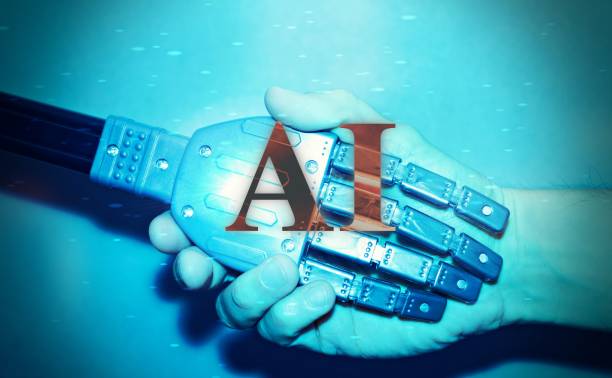
Artificial intelligence robots play an important role in various industries and can help improve performance, increase productivity, and reduce costs.
Some of the roles of artificial intelligence robots in various industries include:
- Manufacturing industry: Artificial intelligence robots can be used on production lines to perform repetitive and manual tasks.
This increases production speed, reduces errors, and improves quality. - Healthcare industry: Artificial intelligence robots can be used to diagnose diseases, provide treatment, and care for patients.
This improves diagnostic accuracy, reduces treatment time, and improves the quality of care. - Customer service industry: Artificial intelligence robots can be used to answer customer questions, solve their problems, and provide support services.
This improves customer service, reduces costs, and increases customer satisfaction. - Transportation industry: Artificial intelligence robots can be used to drive cars, manage traffic, and optimize routes.
This reduces accidents, reduces travel time, and improves transportation efficiency. - Financial industry: Artificial intelligence robots can be used to analyze financial data, predict the market, and provide investment advice.
This improves prediction accuracy, reduces investment risk, and increases profitability.
These roles show that artificial intelligence robots can have positive effects in various industries and help improve performance and efficiency.
Optimal use of artificial intelligence in robots is the key to progress in various industries.
| Industry | Key Applications | Advantages |
|---|---|---|
| Manufacturing | Production line automation, quality control | Increased productivity, error reduction |
| Healthcare | Disease diagnosis, robotic surgery | High accuracy, speed of action |
| Customer Service | Answering questions, technical support | 24/7 availability, cost reduction |
| Transportation | Self-driving cars, traffic management | Accident reduction, route optimization |
| Finance | Data analysis, market prediction | Better decision-making, risk reduction |
How to Build an Artificial Intelligence Robot: A Step-by-Step Guide

Building an artificial intelligence robot requires knowledge and expertise in various fields such as machine learning, programming, and software engineering.
However, by using the right tools and resources, a simple artificial intelligence robot can be built.
Below is a step-by-step guide to building an artificial intelligence robot:
- Choose a programming language: To build an artificial intelligence robot, you need a programming language.
Some popular programming languages for building artificial intelligence robots include Python, Java, and C++. - Choose a machine learning framework: To train the artificial intelligence robot, you need a machine learning framework.
Some popular machine learning frameworks include TensorFlow, PyTorch, and scikit-learn. - Collect data: To train the artificial intelligence robot, you need sufficient and high-quality data.
Data can be collected from various sources such as databases, websites, and sensors. - Train the robot: After collecting data, you must train the robot using machine learning algorithms.
- Evaluate the robot: After training the robot, you must evaluate its performance.
Can the robot perform the tasks you want accurately? - Improve the robot: If the robot’s performance is not satisfactory, you must improve it.
You can improve the robot’s performance by using more data, better machine learning algorithms, or adjusting model parameters.
These steps will help you build a simple artificial intelligence robot.
With practice and more experience, you can also build more complex artificial intelligence robots.
Building an artificial intelligence robot is a challenging but very rewarding process.
Worried about losing customers who don’t have a professional online store website?
Forget these worries by designing an online store website with Rasaweb!
✅ Significant increase in sales and visitor-to-customer conversion rate
✅ Professional and user-friendly design that builds customer trust
⚡ Get a free consultation from Rasaweb
Artificial Intelligence Robots and Privacy: Concerns and Solutions
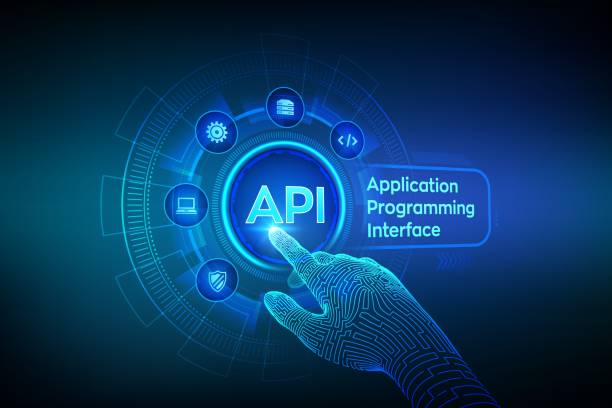
The use of artificial intelligence robots can raise privacy concerns.
Artificial intelligence robots need to collect and process personal data to perform their tasks.
This data can include identity information, financial information, health information, and location information.
If this data is not properly protected, it may be misused and individuals’ privacy may be violated.
To reduce privacy concerns, the following solutions should be considered:
- Transparency: Users should know what types of data the artificial intelligence robot collects, how it uses this data, and how it protects it.
- Control: Users should be able to control what types of data are collected by the artificial intelligence robot and how it is used.
- Security: The data collected by the artificial intelligence robot must be properly protected.
This data must be protected against unauthorized access, theft, and misuse. - Accountability: Companies and organizations that use artificial intelligence robots must be accountable and responsible if privacy is violated.
By following these solutions, privacy concerns can be reduced, and the benefits of artificial intelligence robots can be enjoyed.
Protecting privacy in the age of artificial intelligence robots is a necessity.
Artificial Intelligence Robots in Iran: Opportunities and Challenges
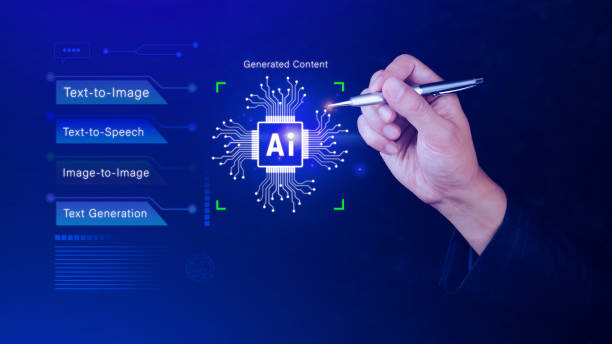
The use of artificial intelligence robots in Iran can create many opportunities for economic and social development.
However, the implementation of this technology in Iran is also associated with various challenges.
Opportunities:
- Increased productivity: Artificial intelligence robots can be used in various industries to perform repetitive and manual tasks.
This increases production speed, reduces errors, and improves quality. - Creating new job opportunities: The development and implementation of artificial intelligence robots can lead to the creation of new job opportunities in various fields such as software engineering, data science, and robotics.
- Improving public services: Artificial intelligence robots can be used to provide better and more efficient public services.
For example, artificial intelligence robots can be used to answer citizens’ questions, provide medical services, and manage traffic.
Challenges:
- Lack of expertise: Developing and implementing artificial intelligence robots requires expertise in various fields such as machine learning, natural language processing, and software engineering.
- Lack of data: Artificial intelligence robots need sufficient and high-quality data to learn and improve their performance.
- Ethical issues: The use of artificial intelligence robots can raise various ethical issues, such as privacy, discrimination, and accountability.
To benefit from the opportunities and overcome the challenges, we must have careful planning and seek help from experienced professionals.
We should also pay attention to ethical issues and provide solutions for managing these issues.
The development of artificial intelligence in Iran requires investment and planning.
Frequently Asked Questions
| Question | Answer |
|---|---|
| What is an Artificial Intelligence Robot? | An Artificial Intelligence (AI) Robot is a machine capable of understanding its environment, reasoning, learning, and making decisions to perform tasks independently. |
| What is the difference between ordinary robots and AI robots? | Ordinary robots perform repetitive tasks based on pre-programming, while AI robots can learn from experience, interact dynamically with the environment, and even behave in a way that resembles human intelligence. |
| What are the main applications of AI robots? | They are used in industries (manufacturing, assembly), medicine (surgery, diagnosis), services (customer support, domestic), exploration (space, underwater), and many other fields. |
| What technologies are used in building AI robots? | Machine Learning, Computer Vision, Natural Language Processing, Deep Learning, and Robotics are among the key technologies. |
| Can AI robots have emotions? | Currently, robots do not have emotions in the human sense. They can recognize and respond to emotions, but they do not experience emotions themselves. |
| What are the main challenges in developing AI robots? | Safety, reliability, ethics, autonomy, adaptability to complex environments, and natural interaction with humans are important challenges. |
| How are AI robots trained? | They are usually trained using large amounts of data, machine learning algorithms, and deep learning to identify patterns and make decisions. |
| Examples of AI robots in everyday life? | Smart robotic vacuum cleaners, customer support chatbots, self-driving cars, and surgical robots in hospitals. |
| Are AI robots a threat to human jobs? | Some repetitive jobs may be automated, but at the same time, robots can increase productivity and create new jobs in the development, maintenance, and monitoring of these systems. |
| How is the future of AI robots predicted? | They are expected to become smarter, more autonomous, and capable of performing more complex tasks, and to interact more closely with humans in various environments. |
And other services of Rasa Web advertising agency in the field of advertising
Smart Google Ads: A new service to increase campaign management through precise audience targeting.
Intelligent marketing automation: A combination of creativity and technology to increase click-through rates by designing an attractive user interface.
Smart digital branding: A combination of creativity and technology to increase sales through SEO-driven content strategy.
Smart UI/UX: Professional optimization for user interaction using user experience customization.
Smart customer journey map: Professional optimization for analyzing customer behavior using SEO-driven content strategy.
And more than hundreds of other services in the field of internet advertising, advertising consulting, and organizational solutions
Internet Advertising | Advertising Strategy | Advertorials
Sources
What is an Artificial Intelligence Robot?
, Applications of Robots and Artificial Intelligence
, What is the difference between Artificial Intelligence and Robotics?
, Smart Robots and Artificial Intelligence
? For your business to soar in the digital world and achieve unprecedented success, Rasa Web Digital Marketing Agency is by your side with its expertise and experience. From user-friendly website design and SEO optimization to running targeted advertising campaigns, we are ready to transform your brand online and pave the way for sustainable growth.
Contact us for consultation and services.
📍 Tehran, Mirdamad Street, next to the Central Bank, South Kazerun Alley, Ramin Alley No. 6



